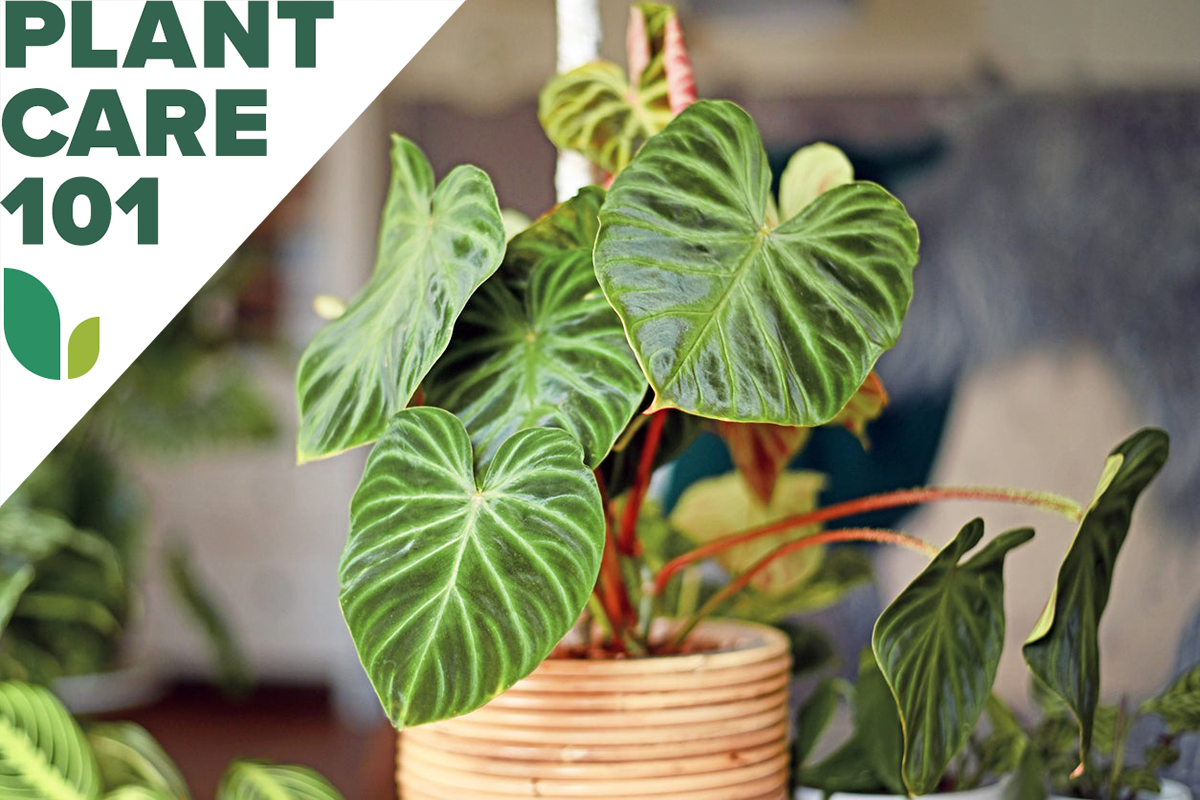

We may earn revenue from the products available on this page and participate in affiliate programs. Learn More ›
Philodendrons are among the most popular choices for houseplants due to their attractive foliage and easy care. The plants come in more than 100 varieties that vary in size, color, and growth habit.
The vining variety makes excellent indoor hanging plants, while upright philodendrons are well suited for tabletop or floor decor. Even newbie houseplant growers can cultivate a leafy backdrop with these low-light houseplants. Ahead, find out everything you need to know about philodendron care, and discover how simple it is to grow this lush, tropical plant.
Philodendron Care at a Glance
Common name: Philodendron
Scientific name: Philodendron
Soil: Light, loamy, well draining
Light: Medium to bright, indirect
Water: Moderate, avoid overwatering and under watering
Food: 3-2-1 houseplant foliage fertilizer
Temperature and humidity: Medium-high humidity, temps above 55 degrees Fahrenheit
Propagation: Easily propagated by cuttings in water
Safety: Toxic if consumed
Philodendron Characteristics
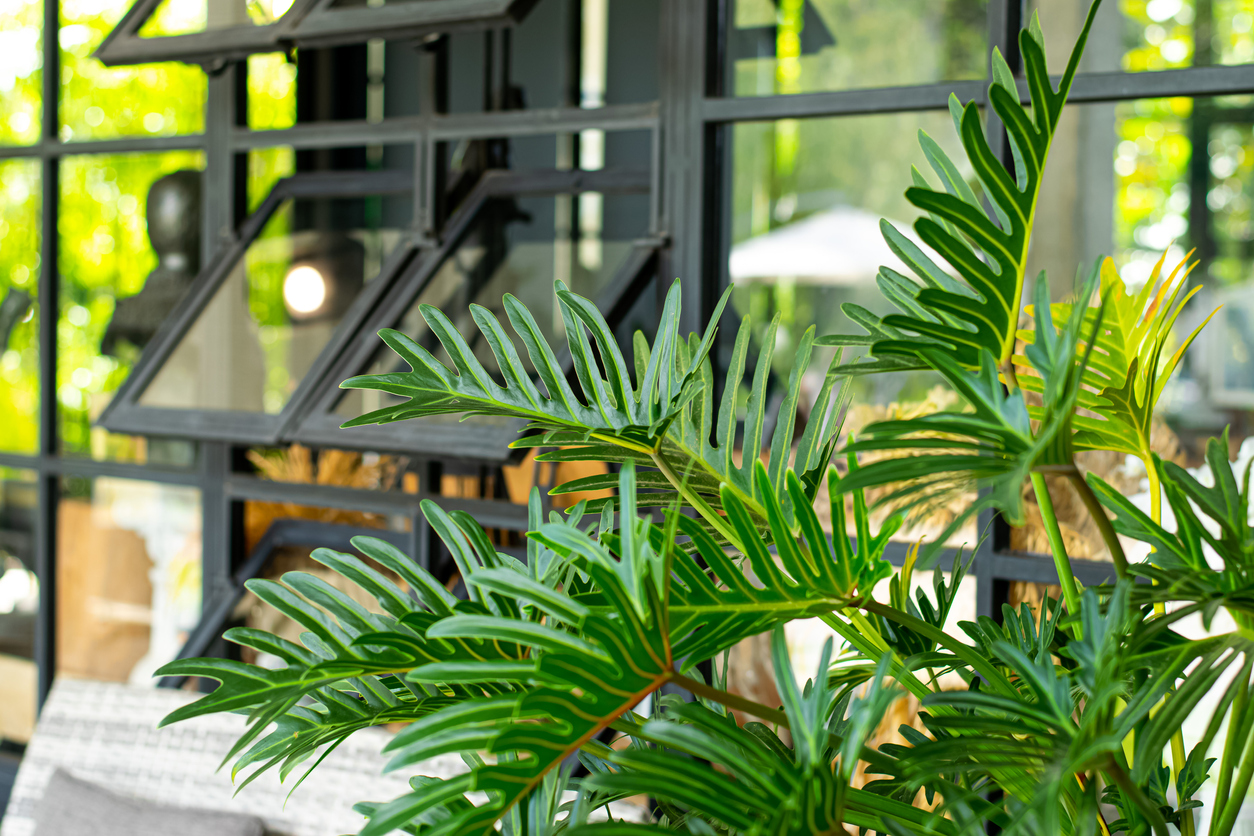
Native to tropical regions of the Americas, philodendron (Philodendron) boasts glossy foliage that’s usually green but might feature other colors, including purples and coppery hues.
Most varieties of philodendron flower, but this plant species might not produce flowers until it’s a few years old.
Vining philodendron is classified as a hemiepiphyte, a climber that does not grow toward the sun as most vines do. Instead, it grows toward a support, such as a nearby tree or trellis.
The climbing variety of this plant (Philodendron hederaceum var. oxycardium) will twist its way around stakes and poles to create vertical appeal.
Philodendrons that feature an upright growth habit (Philodendron bipinnatifidum) come in various sizes with different leaf configurations, including solid leaves and split leaves.
These non-climbing varieties can be small or large, depending on the type, ranging in mature height from about 1 foot up to 6 feet, and they grow well as container plants.
Selecting Soil for Philodendron
These lush houseplants prefer slightly acidic soil (5.0 to 6.0 on the pH scale), similar to that found in their native tropical environment.
Select a lightweight indoor houseplant potting soil that contains organic matter, perhaps a blend with sphagnum peat moss or coconut coir, such as Miracle-Gro Indoor Mix.
The grow mix should drain well to keep philodendron roots from sitting in soggy soil, which can lead to root rot and fungus problems.
Over time, salts can build up in potting soil due to watering and can cause philodendron leaves to turn yellow or wilt. To prevent this from occurring, consider repotting with new soil every 2 to 3 years.
Choosing the Right Light
In its natural habitat, philodendron grows under a jungle canopy that provides medium-to-bright filtered light but no direct light.
Position this plant in a north-facing window or in a room where it will receive indirect light. Philodendrons will grow in deep shade, but they grow more slowly. Avoid south-facing windows if the plant would be in the path of bright sun rays during even a small amount of time during the day.
During warm summer months, philodendrons can be taken outside and placed on a covered patio or under a tree. They will benefit from ample air circulation but don’t put them where they will receive direct sun rays.
Watering Philodendron
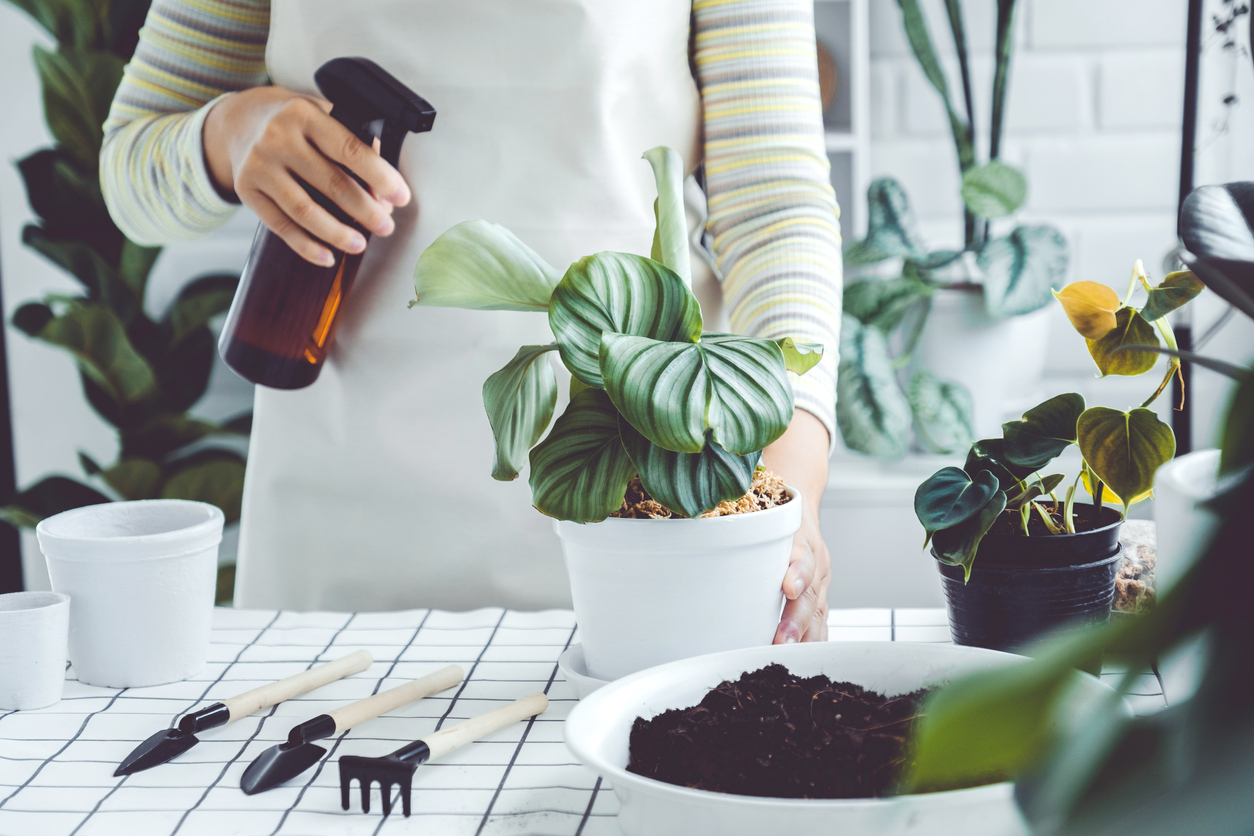
Philodendrons need regular watering—about once per week—but they don’t like overwatering. The top inch of soil in the pot should be allowed to dry out before the next watering.
The size of the plant and the size of the pot both play a role in how often it will need watering.
The roots of a large plant in a relatively small pot will absorb water from the soil more quickly than a small plant in a larger pot. To determine an optimal watering schedule:
- Water the philodendron thoroughly (setting it in a sink where water can drain out works well).
- Check the soil for moisture content every couple of days by poking a finger in the top of the soil. When the top inch of soil is dry but the soil beneath is still slightly damp, it’s time to rewater.
Fertilizing Philodendron
Like most houseplants, philodendron needs fertilizer to develop lush, rich foliage color and to bloom. Consider applying a balanced fertilizer for the best results, such as plant-specific Philodendron Fertilizer 3-1-2.
Fertilize monthly during the plant’s active-growing season (spring through summer), and increase the time between feedings to once every 6 weeks during fall and winter.
Follow the product’s usage instructions; in most cases, the fertilizing liquid should be diluted in water before pouring over the soil. Larger plants will require more fertilizer than smaller plants.
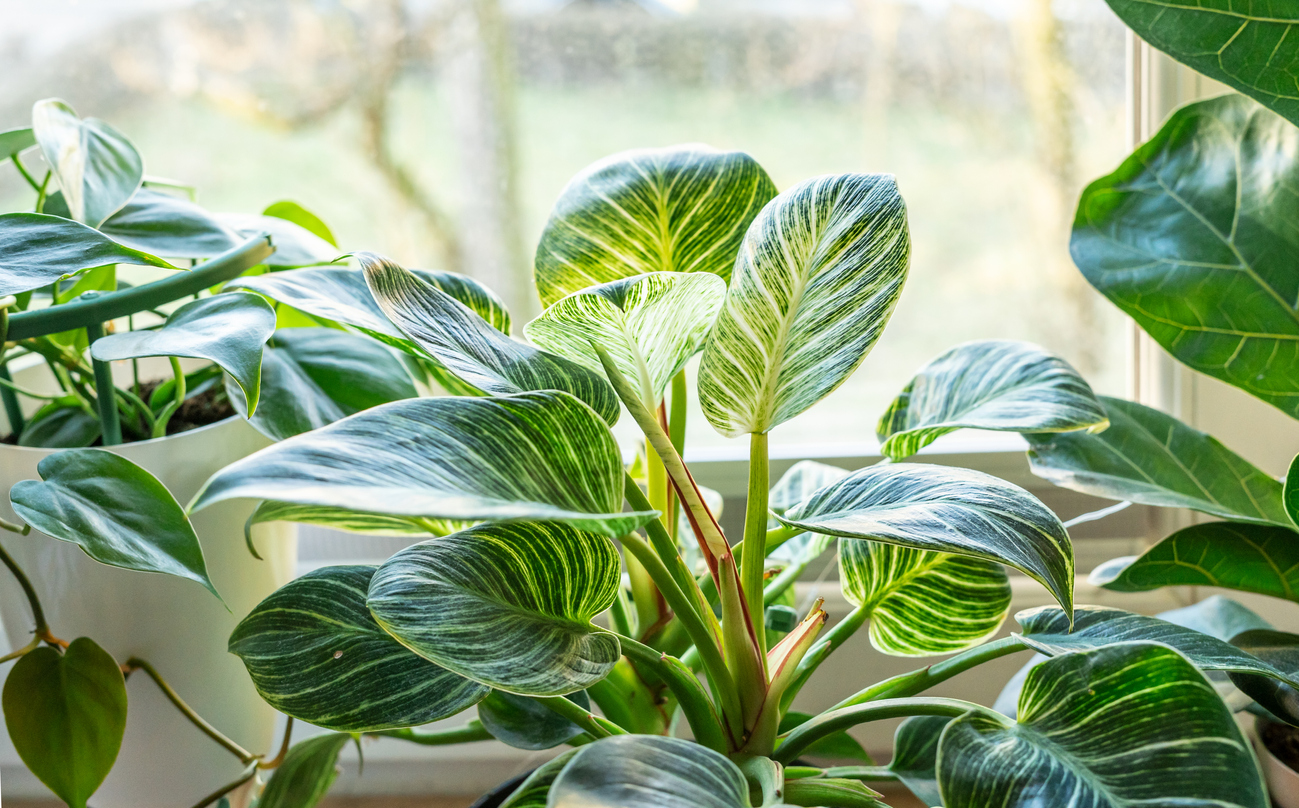
Setting the Temperature and Humidity
Tropical plants like warm, humid growing conditions, and philodendrons are no different in that regard. It will, however, tolerate occasional temperatures in the mid-to-upper 60s.
However, if the temp drops below 55 degrees Fahrenheit, the cool air could damage the plant and stunt its growth. Average indoor home temperatures suit the healthy growth of this indoor plant.
Philodendron enjoys growing in humid conditions as well, but most plant owners don’t want high humidity levels in their homes.
If the air is very dry, which tends to happen most during winter months when using a furnace dries out the air, consider putting a humidifier in the room or misting the plant with water once a week.
Pruning Your Philodendron
It’s best to prune your philodendron in the spring or fall. Cut any overgrown or leggy stems with clean, sharp pruning shears or scissors just above the leaf’s node.
Propagating Philodendron
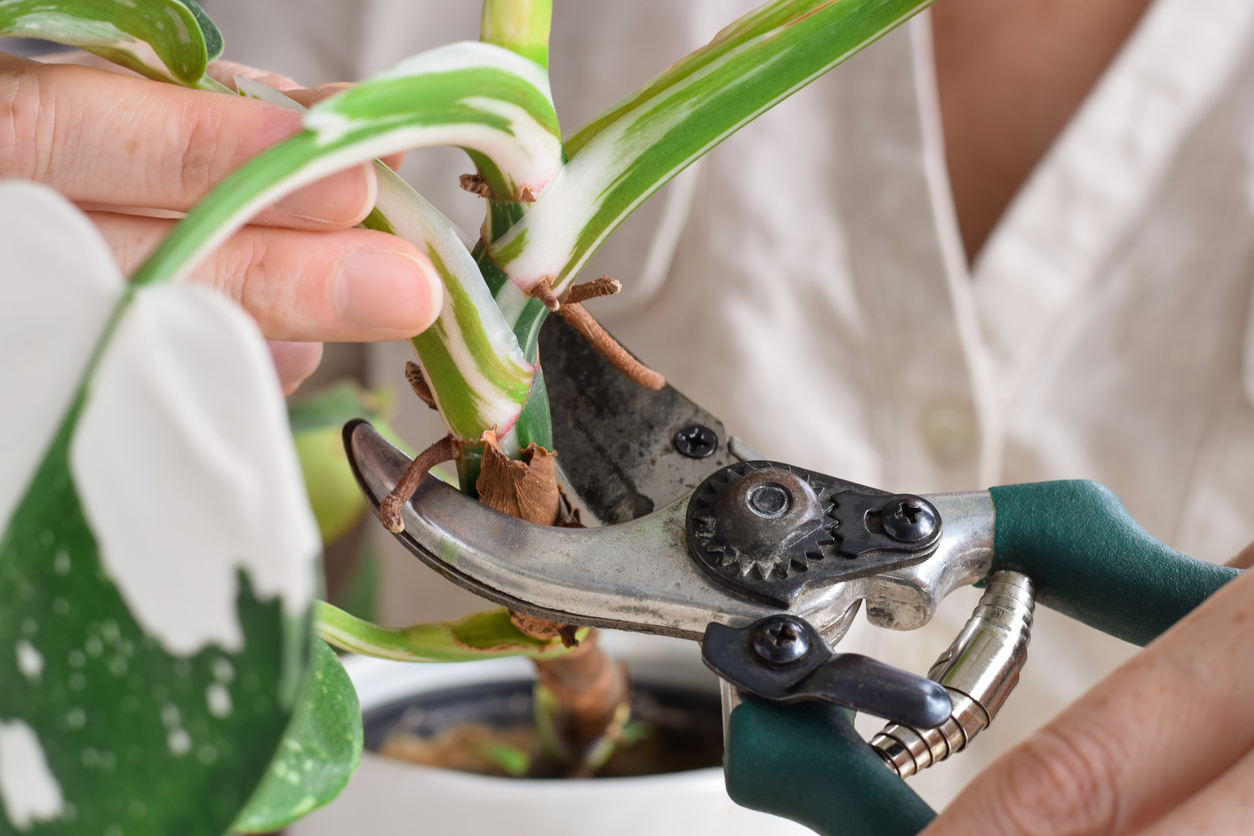
For those who want additional philodendron plants without having to purchase them, it’s a snap to propagate new plants that are identical to the existing one. Philodendron grows easily from stem cuttings placed in water. Here’s how to do it:
- Select a 4- to 6-inch section at the tip of a stem and use sharp scissors or pruning shears to make a diagonal cut at a 45-degree angle.
- Remove all but one or two leaves at the tip of the stem.
- Put the stem in a glass of water about 1 inch deep.
- Optional: Add a pinch of rooting growth hormone to the water.
- Place the glass of water in bright but indirect light.
- Drain and refill the water every few days.
New roots should appear in a week or two, and when they’re 3 inches long, transplant the cutting into a new pot.
Types of Philodendron
Of the many types of philodendron that grow naturally in tropical regions, only a few types are widely propagated for houseplant use. These types thrive in most indoor growing conditions. The best philodendron plant care for one type will generally apply to all types in this species.
- Philodendron brandi: Very easy to grow; this philodendron is a vining climber that features olive green leaves with light gray color variations. Its unique color makes it a focal point in any room.
- Philodendron brasil: A common vining type, this philodendron features greenish-yellow, heart-shaped leaves, and it’s one of the more popular types for hanging baskets. Getting philodendron brasil care right is simple—just keep in mind the plant does best in low or moderate indirect lighting situations.
- Philodendron hederaceum: The most common type available, hederaceum is an upright philodendron. It features large, heart-shaped split leaves that create a stunning visual impact.
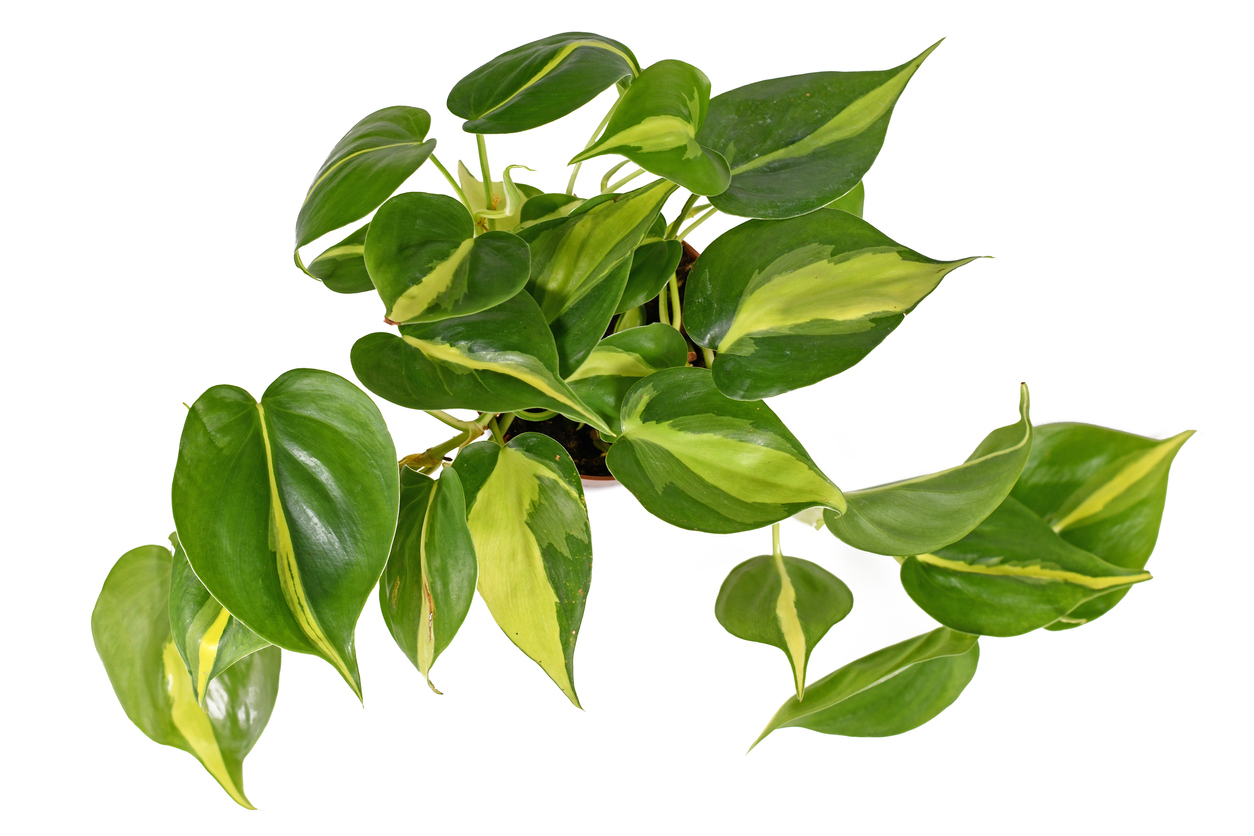
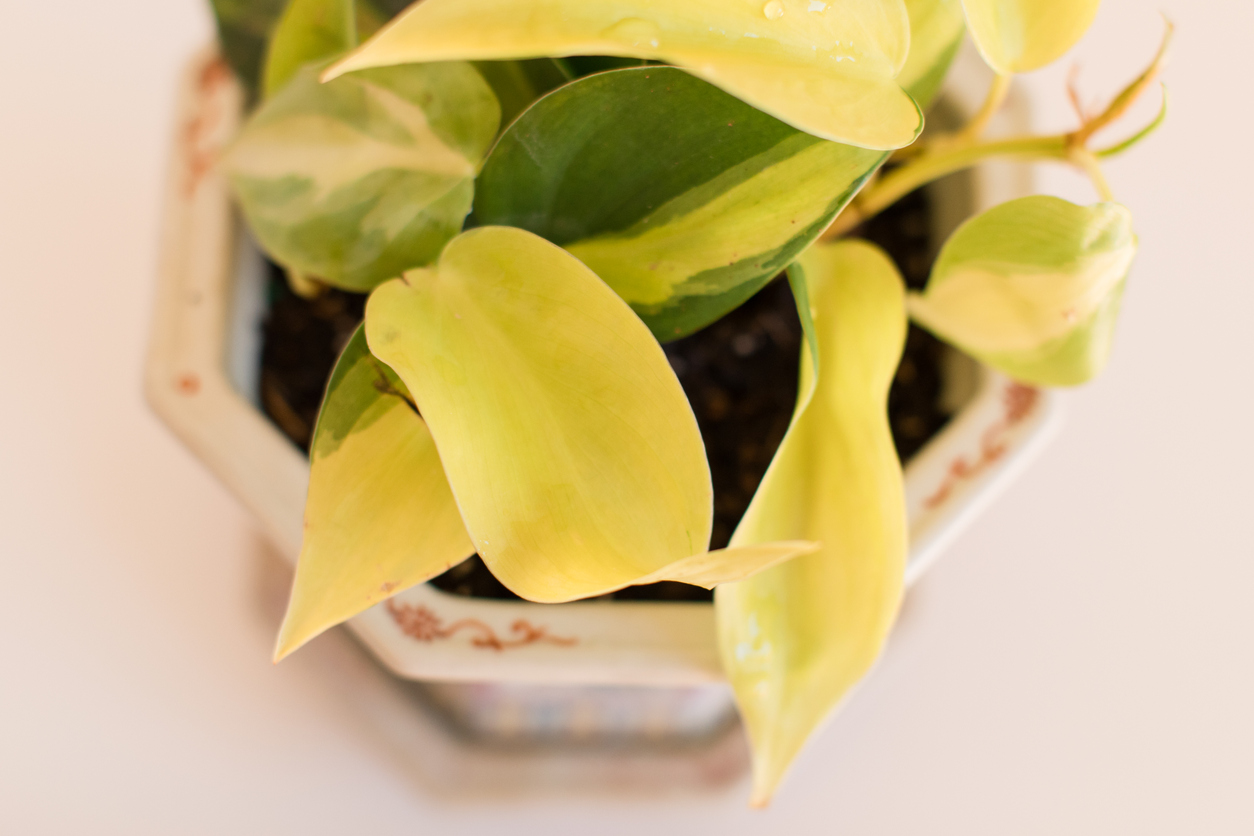
Potential Pests and Diseases
Fortunately, philodendron is an easy keeper and not susceptible to developing many diseases. However, if the plant is neglected or unhealthy, it’s more likely to fall prey to a fungal or insect infestation—common pests, such as spider mites or aphids, might take up residence in the soil.
Overwatering philodendron can lead to soggy soil, which also increases the risk of fungus and gnat infestations.
Most pest infestations are easily treated by spraying the plant with insecticidal soap or treating it with horticultural oil designed for use on houseplants, such as neem oil.
Safety Considerations
Philodendron plants contain calcium oxalate, a known toxin, so take care to keep the plants out of the reach of pets and small children. According to the Children’s Hospital of Philadelphia, it’s rare for children to be poisoned from eating the leaves because the oxalate causes intense mouth pain on contact.
When the substance comes into contact with the skin on other body parts, it causes redness, burning, and swelling. If you suspect a child has eaten a philodendron leaf, call Poison Control Centers at 800-222-1222.
Pets can also develop symptoms from chewing or swallowing the leaves, including a red and swollen mouth and tongue, pawing at the mouth, and drooling. Contact your veterinarian immediately if you suspect your pet ingested philodendron.
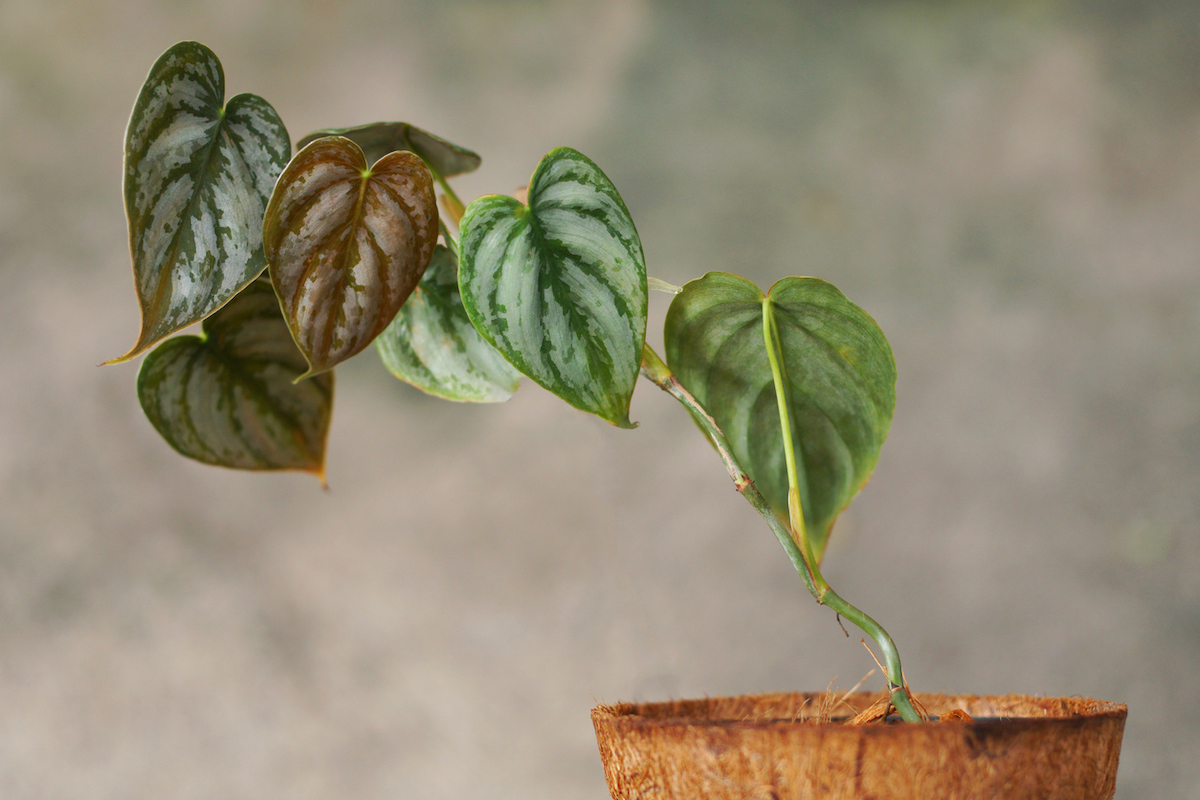
FAQs
No. Direct sunlight can damage the plant. Instead, locate a philodendron where it receives medium-to-bright indirect light, such as in a north-facing window.
It’s one of the most popular houseplants because it comes in many types and requires very little attention.
In USDA plant hardiness zones 11a and 11b, some types of philodendron can be grown outdoors. In regions farther north, however, it’s considered an indoor houseplant.
A healthy philodendron can survive for 20 years or more as a houseplant. In their natural tropical habitat, some have lived upward of 100 years.
No. Water only when the top inch of soil in the pot becomes dry, approximately once a week.
